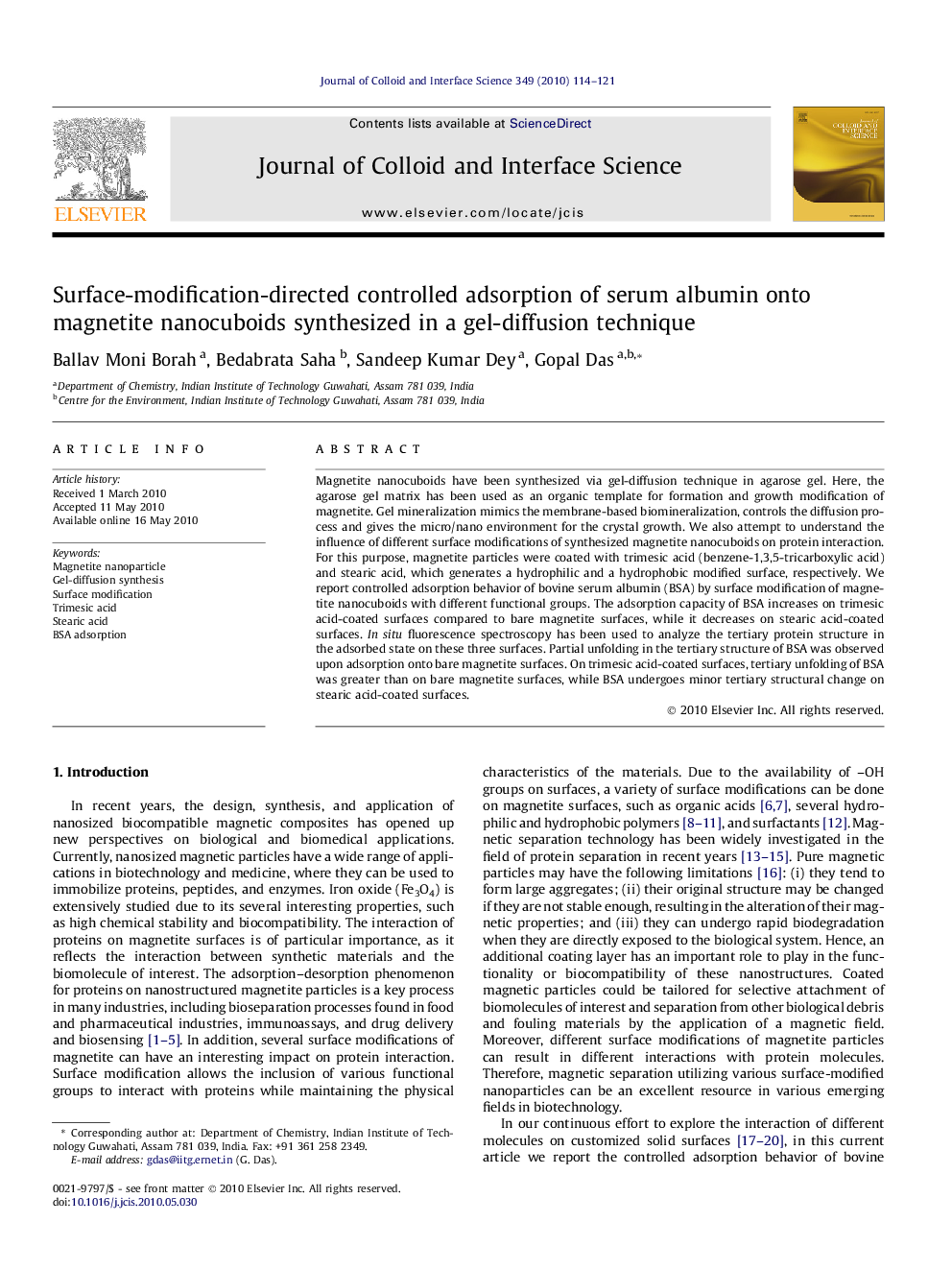| Article ID | Journal | Published Year | Pages | File Type |
|---|---|---|---|---|
| 609588 | Journal of Colloid and Interface Science | 2010 | 8 Pages |
Magnetite nanocuboids have been synthesized via gel-diffusion technique in agarose gel. Here, the agarose gel matrix has been used as an organic template for formation and growth modification of magnetite. Gel mineralization mimics the membrane-based biomineralization, controls the diffusion process and gives the micro/nano environment for the crystal growth. We also attempt to understand the influence of different surface modifications of synthesized magnetite nanocuboids on protein interaction. For this purpose, magnetite particles were coated with trimesic acid (benzene-1,3,5-tricarboxylic acid) and stearic acid, which generates a hydrophilic and a hydrophobic modified surface, respectively. We report controlled adsorption behavior of bovine serum albumin (BSA) by surface modification of magnetite nanocuboids with different functional groups. The adsorption capacity of BSA increases on trimesic acid-coated surfaces compared to bare magnetite surfaces, while it decreases on stearic acid-coated surfaces. In situ fluorescence spectroscopy has been used to analyze the tertiary protein structure in the adsorbed state on these three surfaces. Partial unfolding in the tertiary structure of BSA was observed upon adsorption onto bare magnetite surfaces. On trimesic acid-coated surfaces, tertiary unfolding of BSA was greater than on bare magnetite surfaces, while BSA undergoes minor tertiary structural change on stearic acid-coated surfaces.
Graphical abstractAdsorption of bovine serum albumin could be controlled by simple hydrophilic and hydrophobic surface modification of magnetite nanocuboids synthesized by a gel-diffusion method.Figure optionsDownload full-size imageDownload high-quality image (91 K)Download as PowerPoint slide
